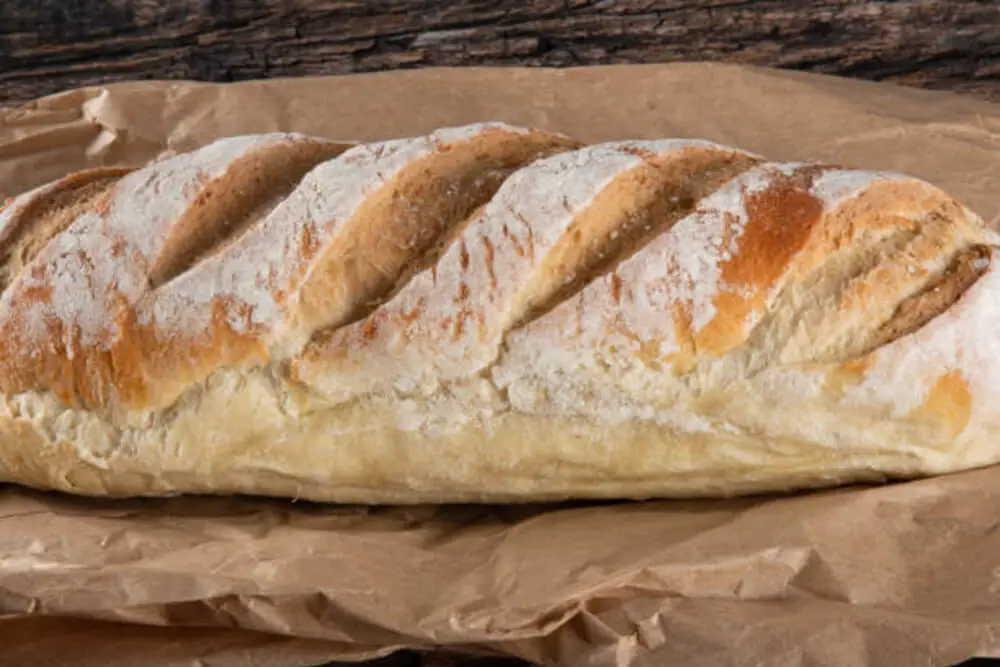Sourdough Baguettes Recipe
Making sourdough baguettes at home is a rewarding culinary adventure that yields delicious, crusty bread with a chewy interior. This recipe takes you through the intricate process of creating these classic French loaves, offering the satisfaction of baking bread that rivals your favorite bakery. The appeal of homemade sourdough baguettes lies in their fresh flavor, delightful texture, and the joy of mastering the traditional art of bread making.

Ingredients Breakdown
To begin, you’ll need a few simple ingredients, but their quality is paramount. For the levain, you’ll need tepid water, bread flour, and an active bubbly starter. The dough itself requires salt, more tepid water, and additional bread flour. Ensuring these ingredients are fresh and of high quality will significantly impact the final product.
Day 1: Preparing the Levain
Start your journey in the evening by preparing the levain. Combine the active starter, tepid water, and bread flour in a medium bowl. Stir until the mixture is well-blended, then cover it with a plate and let it rest overnight. By morning, the levain should be very bubbly and active, indicating it’s ready for the next step. This bubbly nature signifies the presence of natural yeast, essential for a good rise.
Day 2: Mixing and Shaping the Dough
In the morning, transfer the entire levain to a large mixing bowl. Add the water and bread flour, mixing until all the flour is incorporated and a rough dough forms. Cover this mixture with a lid or damp towel and let it rest for 45 minutes. This resting period, known as the autolyse, allows the flour to fully hydrate, making the dough easier to work with and enhancing the final texture of your baguettes.
After the autolyse, add the salt and knead it into the dough by pinching and squeezing until it is evenly distributed. This step is crucial for flavor development and gluten formation. Perform a set of stretch and folds every 30 minutes for a total of 3 hours, covering the dough and letting it rest between each session. This technique strengthens the dough and helps it develop structure.
Once the stretch and folds are complete, gently turn the dough out onto a lightly floured surface and divide it into three equal parts. Shape each piece into a tight ball using a gentle circular motion. Lightly dust the balls with flour and cover them with a towel, allowing them to rest for 30 minutes.
Next, it’s time to shape the dough into baguettes. Pat the first dough ball into a rectangle about 9 inches long. Fold the top third down and seal it with the heel of your hand. Rotate the dough 180 degrees and repeat with the bottom third. Fold the dough lengthwise to form a slim shape, sealing the edges again. Roll the dough seam-side down to create a baguette shape, pinching the ends if necessary. Place the shaped dough seam-side down on a greased baguette pan or a parchment-lined sheet pan generously dusted with flour. Cover with plastic wrap and refrigerate overnight.
Day 3: Scoring and Baking
The next morning, preheat your oven to 500°F (260°C), positioning racks in the middle and one level below. Prepare a baking sheet for ice cubes to create steam during baking, which is essential for a crisp crust.
When the oven is hot, remove the baguette dough from the fridge. Using a lame, sharp knife, or razor blade, make 3-5 diagonal cuts into each baguette. This scoring allows the bread to expand properly in the oven.
Place a handful of ice cubes on the prepared baking sheet and immediately put the baguette dough in the oven on the middle rack. Position the baking sheet with ice on the lower rack to create steam. Close the oven and reduce the temperature to 450°F (230°C). Bake for 30-35 minutes until the baguettes are a deep golden brown. Transfer to a wire rack to cool.
Recipe Tips & Frequently Asked Questions
How to maintain an active sourdough starter: Feed your starter regularly with equal parts water and flour.
Troubleshooting common issues with sourdough: If your dough isn’t rising, check the temperature and the activity of your starter.
Adjusting baking times and temperatures for different ovens: Oven temperatures can vary; use an oven thermometer for accuracy.
What to Serve with Sourdough Baguettes
Sourdough baguettes are incredibly versatile. Enjoy them with a variety of cheeses, spreads, and dips for a delightful appetizer. They also pair wonderfully with soups, salads, and main courses like roasted meats or pasta dishes. The crisp crust and chewy interior make them perfect for soaking up sauces and complementing savory flavors.
Making sourdough baguettes at home is a fulfilling process that results in delicious, artisanal bread. By following this detailed guide, you’ll not only achieve fantastic results but also gain a deeper appreciation for the art of bread making. Embrace the challenge and enjoy the mouthwatering rewards
INGREDIENTS:
For the levain:
65 grams tepid water
65 grams bread flour
65 grams active bubbly starter
For the dough:
12 grams salt
420 grams tepid water
600 grams bread flour
INSTRUCTIONS:
Day 1: (Evening) Prepare the Levain
- Combine the starter, water, and bread flour in a medium bowl until thoroughly mixed. Cover with a plate and allow it to rest overnight (8-12 hours) until it becomes very bubbly and active, with numerous small bubbles throughout the mixture.
Day 2: Mix the Dough, First Rise, and Shape
- Morning: Transfer the entire levain to a large mixing bowl. Pour in the water and add the bread flour, mixing until all the flour is absorbed and a rough dough forms. Cover with a lid or a damp towel and let it rest for 45 minutes (this is the autolyse).
- After resting, add the salt and knead it into the dough by pinching and squeezing until it is evenly distributed. Perform a set of stretch and folds (refer to the video), cover the bowl, and let the dough rest for 30 minutes.
- Continue with sets of stretch and folds every 30 minutes over a 3-hour period, covering and resting between each session.
- Turn the dough out onto a lightly floured surface and divide it into 3 equal parts. Using your hand, gently roll each piece into a tight ball using a circular motion. Lightly dust with flour and cover with a towel, allowing the dough to rest for 30 minutes.
- Shaping: Flour your work surface and pat the first dough ball into a rectangle about 9 inches long. Fold the top third down and press with the heel of your hand to seal. Rotate 180 degrees and repeat with the bottom third. Fold the dough in half lengthwise to form a slim shape, sealing the edges again with the heel of your hand. Roll the dough seam-side down to form a baguette shape, pinching the ends if needed.
- Place the shaped dough seam-side down on a greased baguette pan or a parchment-lined sheet pan generously dusted with flour.
- Cover with plastic wrap and refrigerate overnight.
Day 3: Preheat, Score, and Bake
- Morning: Preheat your oven to 500°F (260°C), positioning racks in the middle and one level below. Prepare a baking sheet for ice cubes.
- Scoring: Remove the baguette dough from the fridge once the oven is hot. Use a lame, sharp knife, or razor blade to make 3-5 diagonal cuts (¼-½ inch deep) into each baguette.
- Baking: Place a handful of ice cubes on the prepared baking sheet and immediately put the baguette dough in the oven on the middle rack. Position the baking sheet with ice on the lower rack. Close the oven and reduce the temperature to 450°F (230°C). Bake for 30-35 minutes until the baguettes are a deep golden brown. Transfer to a wire rack to cool.
- Baguettes are best enjoyed fresh on the day they are baked, but they can be stored in a paper bag for an extra day. For longer storage, freeze sliced or whole baguettes. To freeze slices, place them on a baking sheet before transferring them to a freezer bag. For whole baguettes, wrap tightly in plastic wrap and place in a freezer bag. Baguettes can be kept in the freezer for several months.
Notes
Baking: When moving the cold baguette dough to a parchment-lined pan, it may feel awkward and snake-like. Handle it swiftly and gently to maintain its shape. Alternatively, you can bake the baguettes directly on a baguette pan, which is easier for beginners but will leave slight perforations on the bottom of the bread.
Steam: To create steam, place ice cubes on a sheet pan positioned on the lowest oven rack, directly below the baguettes.


